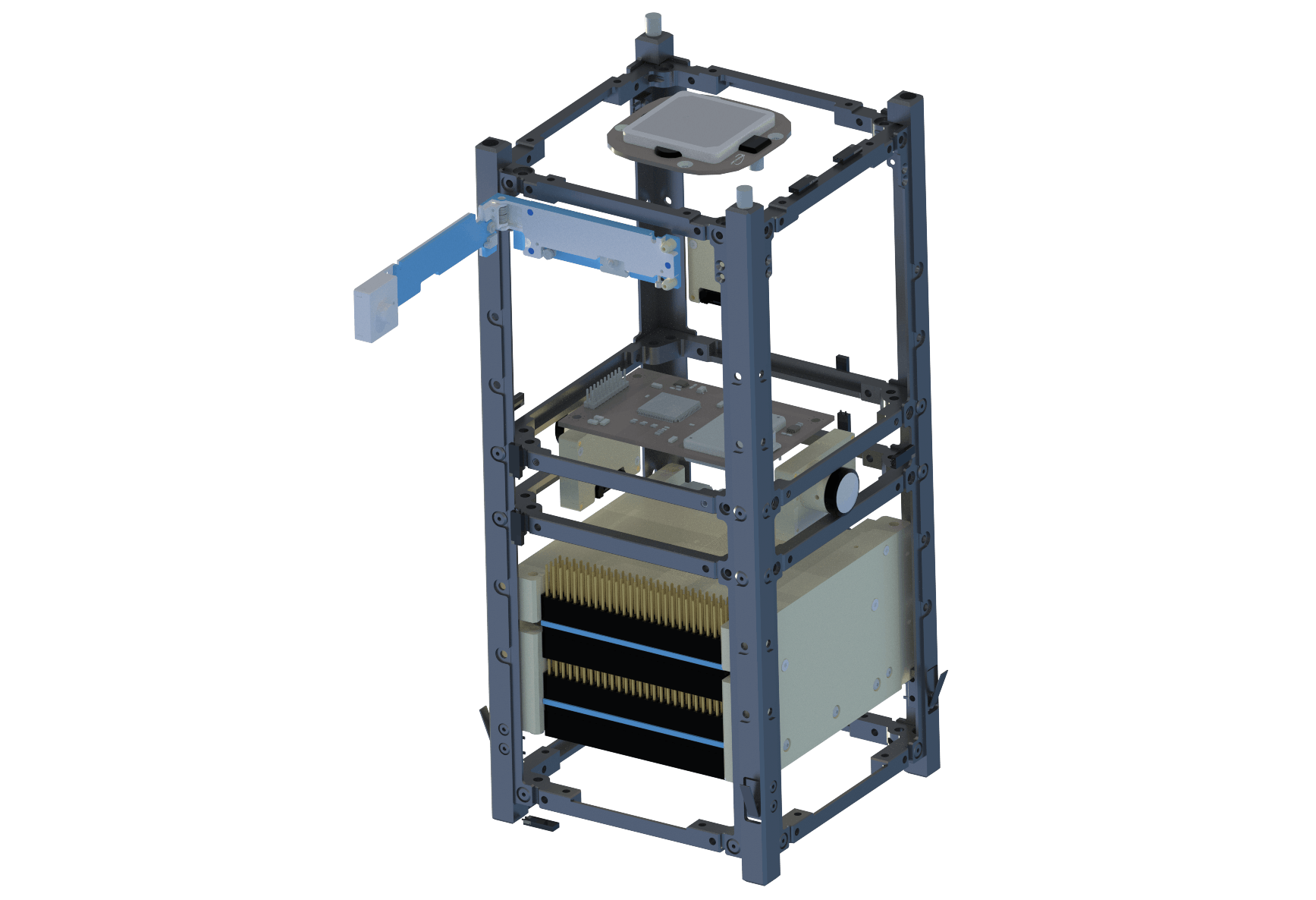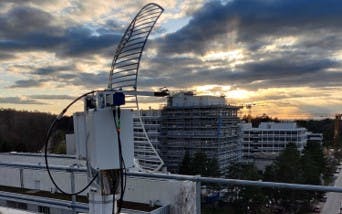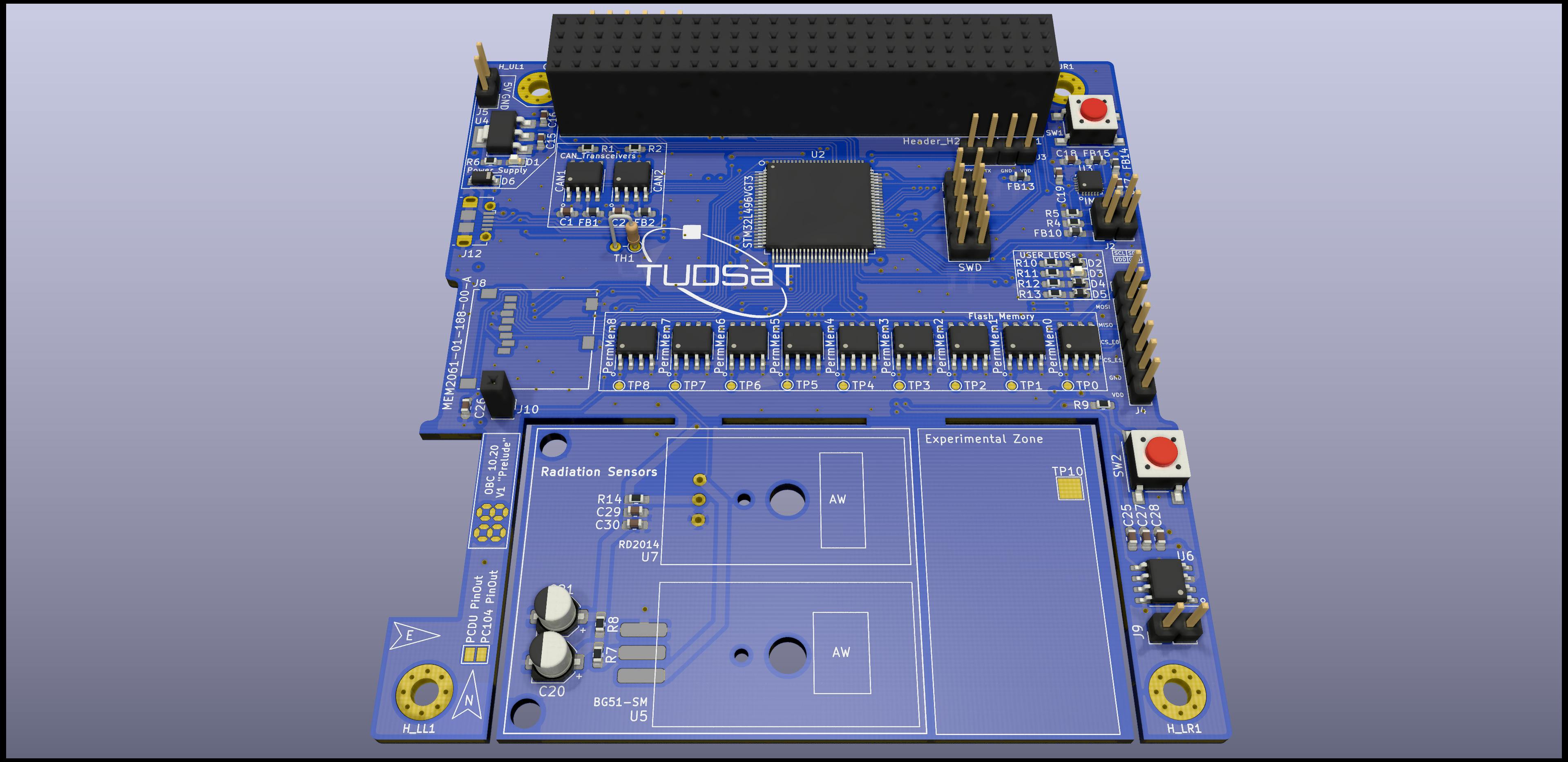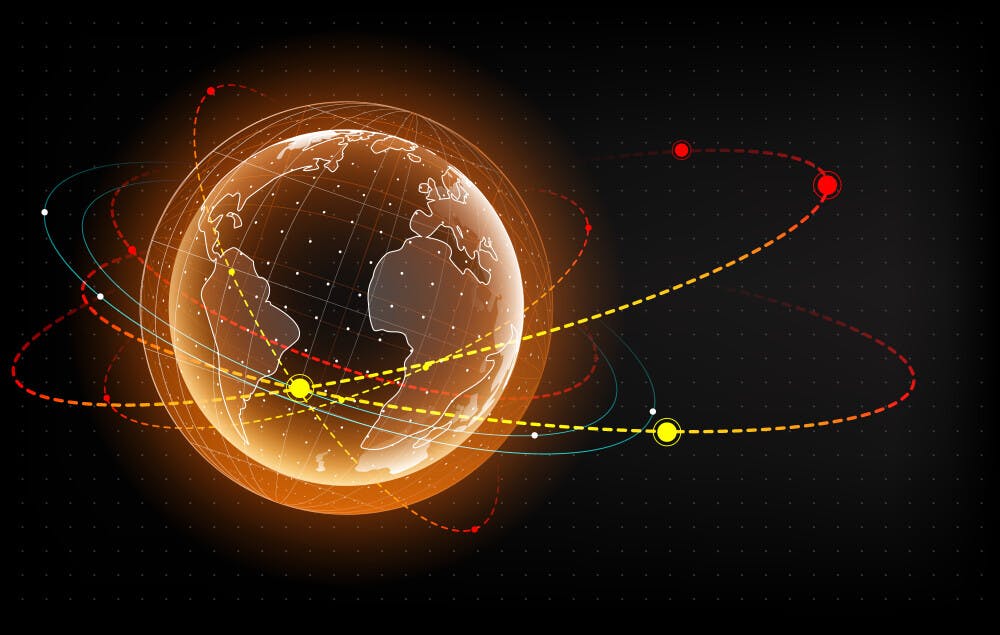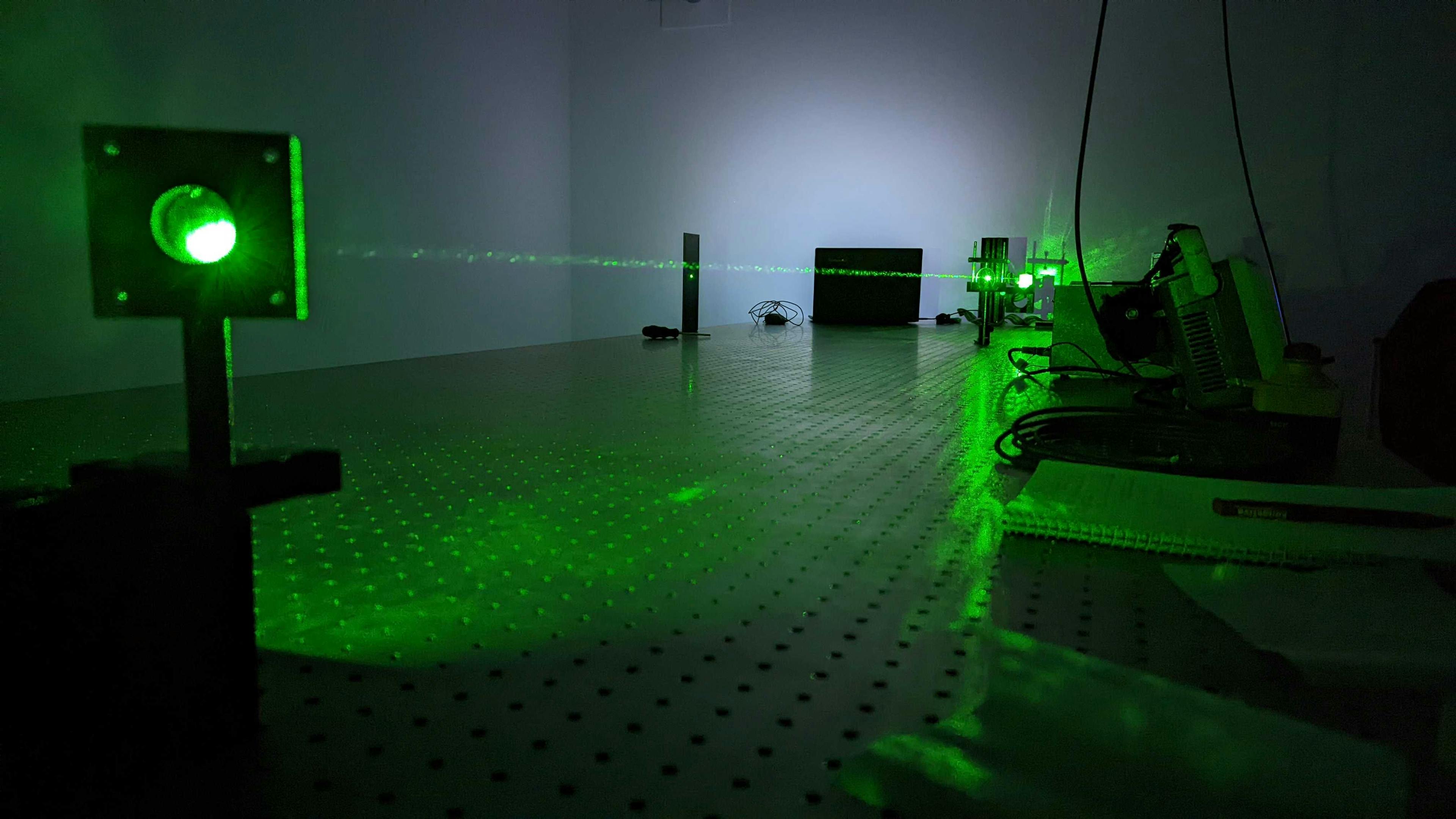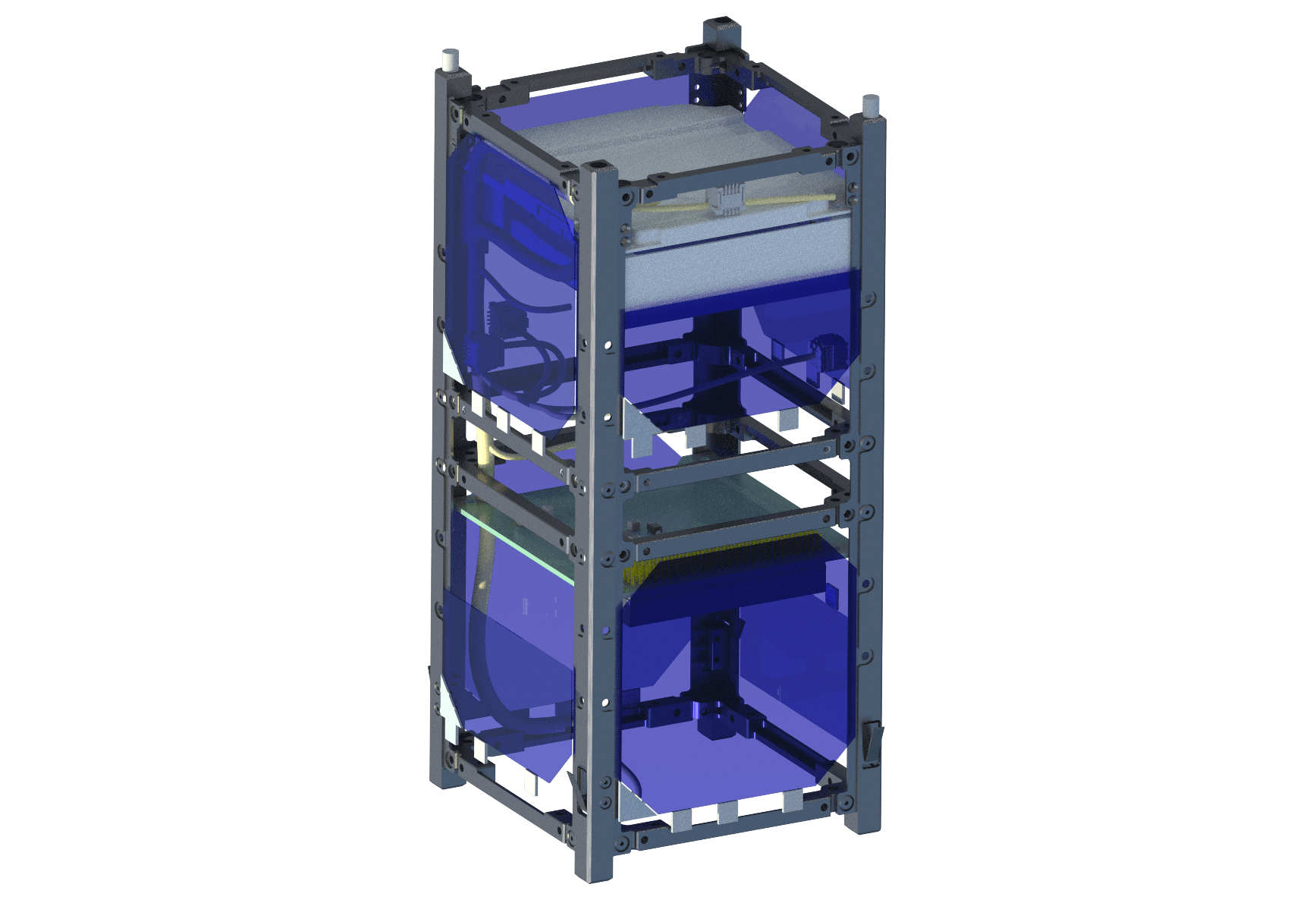The CubeSat project TRACE (TU Darmstadt ReseArch Cubesat for Education) is scheduled to launch in 2026 and currently consists of a team of students from different fields of study and universities in the vicinity of Darmstadt. The project is divided into different subsystems, the so-called subsections. Each of the subsections is led by a team leader who coordinates the work and is also the contact person for technical-related questions. The aim of the project is the development of a 2U CubeSat, the training of the members regarding space technologies, and networking with the industry.

What is a CubeSat?
CubeSats are a concept for nanosatellites initiated by Stanford University and California Polytechnic State University. It defines a uniform framework for the construction and launch of satellites. The smallest satellite described in the CubeSat standard is the so-called 1U (1 Unit) CubeSat, which has external dimensions of 10 cm x 10 cm x 11.35 cm and a maximum weight of 2 kg per unit. Further CubeSats are then multiples of this size (e.g. 1.5U, 2U, 3U, …). The CubeSat project of TUDSaT focuses on the development of a 2U CubeSat.

Mission Objectives
The payload of the CubeSat project can be divided into scientific and educational mission objectives.
Primary Scientific Objectives
Considering the decreasing launch costs due to new rocket technologies and the growing number of large constellations of small satellites, one of the most crucial challenges in astronautics is the sustainable use of the earth’s orbital environment. For this reason, the CubeSat Mission addresses the increasing problem of space debris regarding small satellites and non-cooperative targets.
Nominal operations of satellites depend on the clear identification of the individual satellites. This identification is conventionally achieved by a combination of NORAD-published TLE data and received datasets from the satellite. Because of their simple design, mostly built by amateurs or educational institutes, small satellites suffer from an increased risk of not being fully operational after launch.
Thereby and by difficulties regarding identification through TLE data, caused by many satellites in similar orbits after mass launches, many of these satellites cannot be identified properly. Historical data show that this can take up to 200 days (or never get found).
Consequently, we as a student group have made it our mission to demonstrate and test independent identification technologies during our CubeSat mission, which are supposed to enable the early localization and identification after deployment and the collection of data about its movement and orbit.
Please check out the Mission page for a deeper understanding of our mission and its motivation.
Secondary Scientific Objectives
When planning a space mission, one must always take into account the radiation dose to which the subsystems are exposed. For this reason, the scientific secondary payload is composed of two components: A gamma sensor and an experiment to measure free charges within the high atmosphere.
The objective of this experiment is first to test the concept and, if successful, to learn conclusions about the state of the high atmosphere.
Open Source Philosophy
After a detailed examination of comparable projects and the products available on the market, it became obvious that no standard for components and protocols used in CubeSats had been established so far. For each project, the complete design is started from scratch and little benefit is generated from work already done. Existing Open Source projects are often insufficiently documented, which means that the benefit for the community is missing. Our CubeSat project provides a generic solution to these problems: an open platform that can handle all common requirements and whose development is well documented and made available to the public in a comprehensible way. Unlike other projects, we do not reinvent the wheel but rely on proven CCSDS and ECSS space standards to ensure compatibility with professional equipment. Thus, this platform can be used as a basis for every CubeSat project and can be extended as needed.
Curious?
If you have any questions, please contact the TRACE Team Lead or take a look at our open tasks list.

